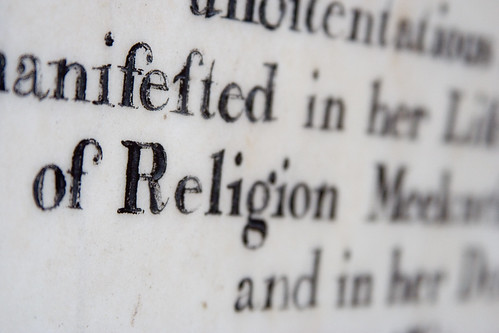Some cool Religion images:
Brain of the Sistine Chapel

Image by tj.blackwell
Michelangelo Simoni, a key Italian Renaissance painter, is known to have been fascinated by anatomy and spent a great deal of time dissecting corpses in attempts to better understand the human form. But, in his most famous work, would a juxtaposition of God with the human brain be considered sacrilege? I opened up Photoshop and created this image composite in order to illustrate the story...
The Sistine Chapel ceiling, painted by Michelangelo between 1508 and 1512, is one of the world's most renowned artworks. The most famous segment is a scene called The Creation of Adam, in which God reaches from the Heavens and gives the spark of life to man. It has been reproduced countless times and is acclaimed as a masterpiece.
In recent years, critics studying these works claim to have found hidden anatomical illustrations, cleverly concealed from the eyes of Pope Julius II and countless religious worshippers, historians, and art lovers. The most pronounced of these is the background of figures and shapes around the figure of God. An article written in the Journal of the American Medical Association describes the shape as an anatomically accurate picture of the human brain, including the frontal lobe, optic chiasm, brain stem, pituitary gland, and the major sulci of the cerebrum. See this document for further discussion of the details.
It is no secret that Michelangelo’s relationship with the Catholic Church became strained during this time. The artist was a simple man, but he grew to detest what he saw as the opulence and corruption of the religious establishment. The Pope once had him beaten for not working on the Sistine fast enough, and Michelangelo threatened to leave the job unfinished if the Pope did not apologise. Remarkably, this ultimatum forced the Pope's apologies and brought a substantial financial peace offering. However, the artist's relationship with the church remained on unsteady terms and, like da Vinci, he used some of his work to play with symbolic connotations over which the Church had no control.
Some say the meaning of the brain in the Sistine Chapel is not of God giving intelligence to Adam, but rather that the intelligence and observation of the human brain lead directly to God without needing a Church at all. Others interpret it as a metaphor for atheism: God is an invention of the human mind, and it is actually mankind that is giving life to his imagined "creator". Opponents of these viewpoints claim that such theories are just another example of Pareidolia - the tendency to recognise shapes in any random collection of objects.
The truth may never be known, but it is fun to guess at symbolic hints left by a man who skilfully combined the worlds of religion, science, and faith in a provocative and awe inspiring work of art. And if you made it all the way to the end of this rambling monologue, I am impressed - thanks for reading!
Manifefted of Religion

Image by simpologist
Epitaph on the wall of the Abbey
Other posts like this, by keyword:
Brain:
Music and the Young Mind: Enhancing Brain Development and Engaging Learning ...
Competitive Chess Boxing: Brain Meets Pain in Iceland ...
Brain Sense: The Science of the Senses and How We Process the World Around Us ...
Study examines how brain corrects perceptual errors ...
Somatosensory Processing: From Single Neuron to Brain Imaging ...
Engage the Brain: Games, Grade Five ...
Brain of the Earth’s Body: Art, Museums, and the Phantasms of Modernity ...
Chapel:
Sistine:
No comments:
Post a Comment